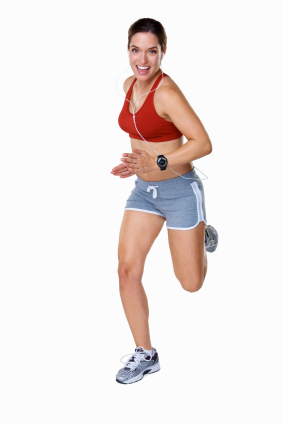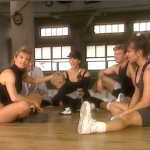Tracking Good Fitness
State-of-the-art tools help you track workouts, nutrition, and general well being
Remember when the pedometer was everyone’s modern, must-have fitness gadget? It was the easy-to-use device that indicated how far you walked or ran. Well, today’s technology expands on that concept by taking a holistic approach to fitness. If you are looking to hit your fitness goals for the year’s end, or thinking of a great gift for a friend, here are my recommendations for the best products, apps, and social networks available.
Of course, even if you are adding some fun with a new tracking system, you still have to exercise! Check out my Walk Fit MP3 Super Playlist. I guarantee the daily counter will get a huge boost with that one!
There are products designed to count your steps, measure your heart rate, calculate your calories, and more. They come in the form of a bracelet, armband, or even a wristwatch. Some clip onto your waistband or shoes, and others you simply hold or slip into a pocket as you work out.
Of course, that doesn’t include the multitude of exercise apps available for download onto computers, smart phones, and tablets. I’ve seen programs that plot exercise intensity or calorie burns. For many people, seeing their efforts graphed out serves as motivation to keep up the good work.
Other apps concentrate on diet and nutrition, like calculating caloric intake throughout the day and alerting you as you near your limit. Some are designed to determine grams of protein and fats in select foods. These programs help remove the guesswork, making it easier than ever to be informed about your exercising and eating habits.
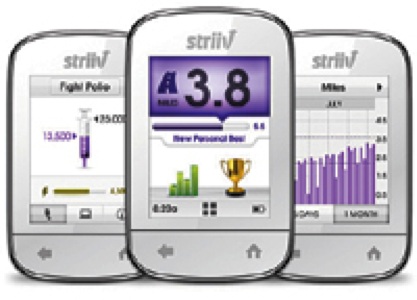 Then there are social websites and apps. These put you in touch with others trying to reach similar goals or who share an interest in biking, hiking, or any workout you enjoy. They bring out the fun factor in exercise and provide valuable feedback. We know from research that if you are surrounded by people who are doing nothing but sitting around, then you are more likely to fall into their bad patterns, too. On the other hand, if you are surrounded by a group of people — even virtually — who are active, then that will be your normal routine. You can also turn exercising into a friendly competition.
Then there are social websites and apps. These put you in touch with others trying to reach similar goals or who share an interest in biking, hiking, or any workout you enjoy. They bring out the fun factor in exercise and provide valuable feedback. We know from research that if you are surrounded by people who are doing nothing but sitting around, then you are more likely to fall into their bad patterns, too. On the other hand, if you are surrounded by a group of people — even virtually — who are active, then that will be your normal routine. You can also turn exercising into a friendly competition.
In that vein, a tool like ChallengeLoop (challengeloop.com) allows users to create fun challenges, determine prizes, and post photos of workout activities.
Tell it like it is
The thing I like about fitness technology is that it keeps you honest. We all think that we are exercising at a certain intensity or for a given amount of time, but gadgets like Striiv and Fitbit show what the reality really is. They provide immediate feedback without self-deception or minimizing.
At the same time, the technology helps you keep on pace so you reach your objectives. For example, I was visiting a friend in the hospital and I noticed a nurse wearing the Fitbit. She said she lost 40 pounds since starting to use it. She went on to say it’s become second nature for her to check how many steps she has logged by late afternoon. If the nurse is falling short of her daily goal, she takes a few more stairs at work or goes for a walk afterwards.
Although I don’t see many drawbacks to incorporating these types of devices or apps into your daily routine, they are not the answer in and of themselves. Some products are slip it on and go, like the Nike+ FuelBand, which records time, calories, and steps as well as notifies you when you are approaching your goals. At the end of the day, you download the info to the accompanying website for full analysis or to check in with other users.
However, some devices require user input, like start and stop times when switching activities, and that means a commitment on your part. The technology won’t help if you aren’t giving it the information regularly and accurately.
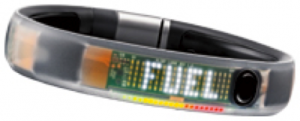 High-tech options
High-tech options
You also have to find the right products that suit your personality and will help you stay compliant. Despite the hype surrounding new technology or apps, they are not one-size-fits-all. It’s the same principle as when choosing an exercise class — Zumba may be popular, but if you do not feel like being around highly energetic dancers, then you probably aren’t going to commit totally.
So before you hand over your hard-earned cash on a new high-tech gadget, do a little homework. You can start by checking the chart in this article, which includes some of the latest gadgets and apps on the market and some general capabilities each one offers.
When it comes to apps, though, a lot of them are free or cost little, so go ahead and test out a few. Whether you want something simple to just count calories or to have the capability of logging multiple aspects of your fitness life, the idea is to get started and make the technology work for you.
Some websites, like RunKeeper (runkeeper.com), are becoming a one-stop shop. With its HealthGraph option, you either enter data manually or sync up your fitness apps from a smart phone or device and let the program assess your exercising, sleep, and weight, displaying it all in graphics. You can also connect with others to chat about fitness objectives and experiences.

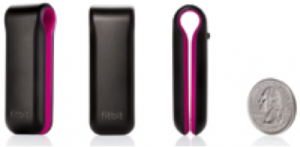 Tell it like it is
Tell it like it is
The thing I like about fitness technology is that it keeps you honest. We all think that we are exercising at a certain intensity or for a given amount of time, but gadgets like Striiv and Fitbit show what the reality really is. They provide immediate feedback without self-deception or minimizing.
At the same time, the technology helps you keep on pace so you reach your objectives. For example, I was visiting a friend in the hospital and I noticed a nurse wearing the Fitbit. She said she lost 40 pounds since starting to use it. She went on to say it’s become second nature for her to check how many steps she has logged by late afternoon. If the nurse is falling short of her daily goal, she takes a few more stairs at work or goes for a walk afterwards.
 Although I don’t see many drawbacks to incorporating these types of devices or apps into your daily routine, they are not the answer in and of themselves. Some products are slip it on and go, like the Nike+ FuelBand, which records time, calories, and steps as well as notifies you when you are approaching your goals. At the end of the day, you download the info to the accompanying website for full analysis or to check in with other users.
Although I don’t see many drawbacks to incorporating these types of devices or apps into your daily routine, they are not the answer in and of themselves. Some products are slip it on and go, like the Nike+ FuelBand, which records time, calories, and steps as well as notifies you when you are approaching your goals. At the end of the day, you download the info to the accompanying website for full analysis or to check in with other users.
However, some devices require user input, like start and stop times when switching activities, and that means a commitment on your part. The technology won’t help if you aren’t giving it the information regularly and accurately.

